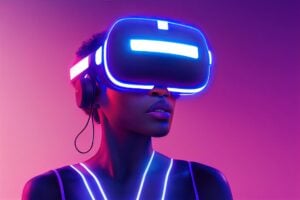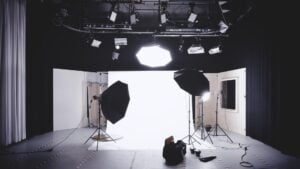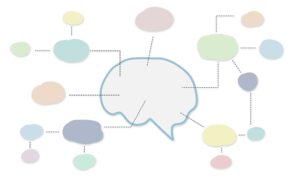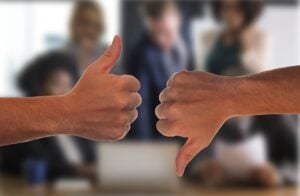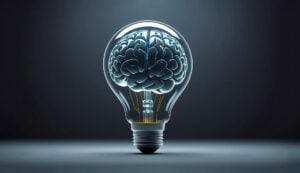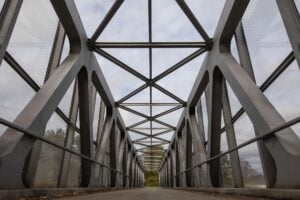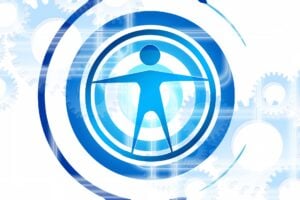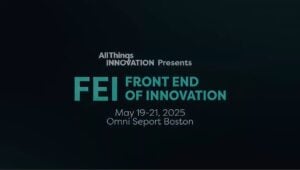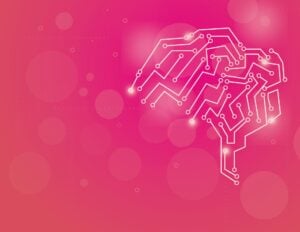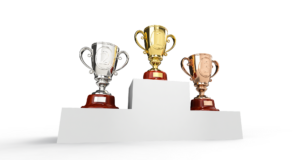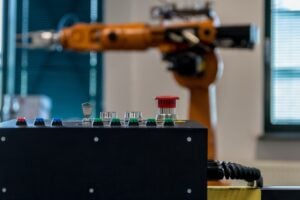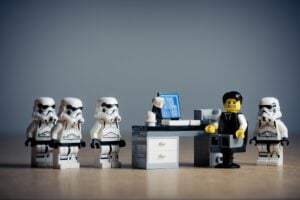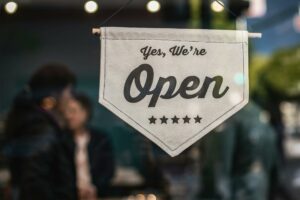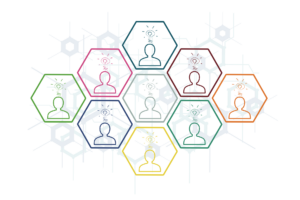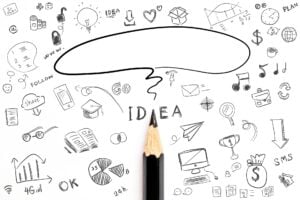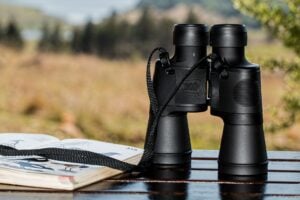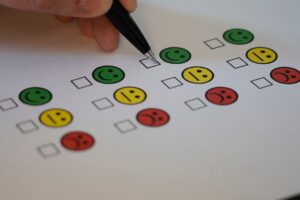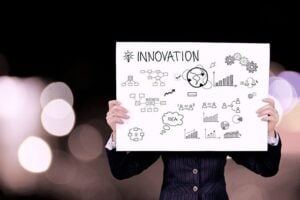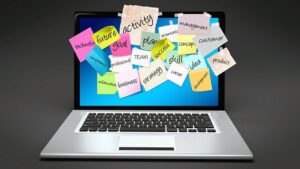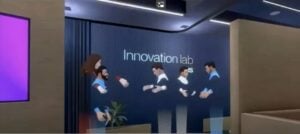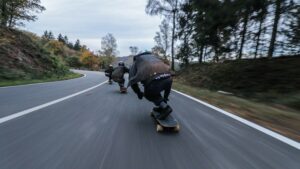KEY QUOTES
- “The real magic happens only when AI and the human brain works together and they work at the right places.”
- “Creatively transform a business model is not an easy task… We need fresh ideas, we need counterintuitive perspective, new points of view in order to design logics that radically depart from the current one.”
- “It was almost easier to collaborate with people you don’t know than the people you work with… The four of us are strangers and we were all total equals.”
- “The space economy is projected to reach $1.8 trillion in the next 10 years. That is nearly a triple increase from 630 billion… a 9% increase annually, significantly more than the global GDP increase.”
- “The problem is that when RSA is breakable, and that’s called Q day, there are bad actors now who are playing a ‘harvest now decrypt later’ game. This is actually the main thing that I want to put into everyone’s heads.”
FULL SESSION SUMMARY
FEI25’s Workshop Day, “Collective Intelligence for the Future,” convened innovation experts and corporate changemakers to delve into advanced methodologies and emerging frontiers shaping the future of business. The sessions provided practical frameworks and forward-looking insights on leveraging collective intelligence, whether through human-AI collaboration, business model re-invention, or navigating the complexities of new technological and economic landscapes.
Solving Real Business Challenges with Collective Intelligence (HI+AI) Workshop
This workshop explored the synergy between human intelligence (HI) and artificial intelligence (AI) as collaborative partners in solving complex business challenges. The session introduced frameworks like ACT (Analyze, Collaborate, Test) and idea generation techniques such as Five Lenses and IDEA DJ. Participants first engaged in design thinking exercises without AI, then learned how to intentionally integrate AI to expand perspectives and enhance their innovation processes. The core message was that true innovation “magic” happens when humans maintain critical thinking and strategic direction while leveraging AI for perspective expansion and efficiency in tasks where it excels. The workshop emphasized that AI should be viewed as a “travel companion” that challenges assumptions and suggests new routes, rather than merely a “GPS” providing the fastest path. Practical exercises highlighted the importance of asking good, well-thought-out questions to AI models to elicit meaningful and nuanced insights.
Transformative Strategic Thinking: The Art of Disciplined Business Creativity Workshop
This workshop, led by authors of a book on transformative strategic thinking, introduced a framework for challenging deeply held assumptions and reimagining business models in response to disruption. Participants applied five “transformational practices” to a fictional company facing AI disruption: shaping meaning (redefining purpose), stretching experiential performance (reimagining customer experience), sharing resources (collaborating externally), switching roles (redefining competitive boundaries), and swapping value equations (reimagining revenue models). The session demonstrated that transforming a business model requires disciplined creativity—a blend of fresh ideas, counterintuitive perspectives, and new points of view to design logics that radically depart from the current ones. It emphasized that this “art” can be trained and cultivated within organizations, turning uncertainty into opportunities through systematic assumption-testing and creative problem-solving.
Silent Collaboration: Challenging Habitual Thinking, Constraints & Inefficiencies
This interactive workshop focused on fostering collaborative innovation, particularly highlighting the surprising effectiveness of working with strangers. Participants engaged in hands-on activities, such as building towers with popsicle sticks and developing creative solutions for travel pain points related to flight delays and cancellations. The hosts emphasized that collaborating with individuals unknown to each other often removes established power dynamics and preconceived notions, leading to more equal participation and breakthrough ideas. The session introduced the concept of “stretcher sessions,” where people unfamiliar with a project review and critique ideas, helping innovators simplify complex concepts and identify what truly matters to an external audience. The workshop underscored the value of embracing productive constraints, transforming pain points into opportunities, and leveraging diverse perspectives for more impactful and concise innovation.
Business Model Innovation: The Advanced and Urban Personal Air Travel Ecosystem
This session explored the burgeoning flying vehicle industry, presenting it as a rapidly developing ecosystem poised to transform urban mobility and logistics. The presenters highlighted that electric vertical takeoff and landing (eVTOL) vehicles are moving from concept to commercial reality, with passenger operations expected by 2026. The discussion covered infrastructure requirements (vertiports), regulatory progress (FAA certifications), and the evolving business models surrounding flying taxis and autonomous aerial transportation. Projections estimate this industry could reach $3 trillion by 2035. A significant focus was placed on the sustainability benefits, such as reducing urban congestion and pollution, as well as the potential for this technology to solve global problems like disaster relief and access to remote areas. The session encouraged participants to identify opportunities within this emerging ecosystem, whether as vehicle manufacturers, infrastructure developers, or service providers.
Business Model Innovation: Space Economy Ecosystem
This session provided a deep dive into the rapidly expanding space economy, projected to reach $1.8 trillion by 2035, and its implications for terrestrial industries. Panelists from NASA, MIT Media Lab, and Aerospace Inc. discussed critical challenges such as space debris, the need for international governance, and fostering cross-industry collaboration. A key theme was making space data more accessible for broader innovation (e.g., through platforms like Kaggle) and applying insights derived from space technologies to solve Earth-based problems (e.g., in food packaging, waste management, and resource handling). The session highlighted NASA’s openness to collaboration and licensing its vast technology portfolio. It also emphasized the importance of developing sustainable governance models for space activities to ensure long-term viability. The panelists encouraged a mindset shift from viewing space as a distant frontier to recognizing its immediate relevance for business model innovation and societal problem-solving.
Unpacking Quantum For Innovation and Your Organization
Leslie Shannon, Nokia’s Head of Trend and Innovation Scouting, demystified quantum computing, explaining its fundamentals, current state, and critical business implications. She differentiated quantum computing from AI by highlighting its ability to perform complex calculations beyond classical computing capabilities, as exemplified by Google’s Willow computer solving a problem in five minutes that would take septillion years classically. While widespread quantum computing is still 8-30 years away, Shannon stressed the immediate and critical security implications, particularly the “harvest now, decrypt later” threat. Organizations must begin exploring quantum-resistant encryption solutions now to prepare for “Q-Day”—when quantum computers can break current RSA encryption standards. The session also touched on quantum sensing (e.g., ultra-sensitive magnetic sensors for medical imaging or geological surveys) and quantum networking, urging businesses to understand how these technologies could disrupt or create opportunities in their industries over various time horizons.
KEY TAKEAWAYS
- Human-AI Synergy is Paramount: The most effective innovation results from intentional collaboration between human intelligence and AI, with humans providing critical thinking and strategic direction, and AI expanding perspectives and enhancing efficiency.
- Disciplined Creativity Drives Business Model Transformation: Rethinking business models requires a structured yet creative approach that systematically challenges assumptions and explores alternative value propositions, resource models, and customer experiences.
- External Collaboration Fosters Breakthroughs: Working with diverse groups, including strangers and external experts, can break down internal biases and power dynamics, leading to fresh perspectives and more innovative solutions.
- Emerging Technologies Demand Proactive Engagement: Industries like urban air mobility, the space economy, and quantum computing, while still evolving, offer significant future growth opportunities and require organizations to proactively monitor, analyze, and strategically engage with their development.
- Future-Proofing Requires Anticipatory Security: For technologies like quantum computing, immediate action is necessary to address long-term security threats (e.g., “harvest now, decrypt later”) by investing in quantum-resistant encryption, even as widespread quantum computing capabilities are still years away.
- Insights from Constraints and Empathy: Productive constraints (e.g., time limits) can simplify complex problems, while deep empathy for user pain points and understanding “jobs to be done” are crucial for developing truly impactful innovations.
DELIVERY ON EVENT FOCUS: Aligning Innovation with Business Strategy
The Workshop Day consistently aligned innovation with business strategy by providing frameworks and insights directly applicable to strategic decision-making and long-term organizational health.
- Strategic AI Integration: The HI+AI workshop demonstrated how to strategically leverage AI to enhance creative problem-solving and ideation, directly supporting strategic objectives for innovation.
- Business Model Transformation: The “Transformative Strategic Thinking” workshop provided a disciplined methodology for reimagining core business models, a critical exercise for strategic resilience and growth in a disruptive environment.
- Future-Focused Opportunity Identification: Sessions on the Space Economy and Urban Air Travel directly addressed emerging multi-trillion-dollar industries, providing strategic foresight on where future growth opportunities lie and how businesses can position themselves.
- Risk Mitigation and Long-Term Planning: The Quantum Computing session highlighted a critical future security threat, underscoring the strategic imperative of investing in quantum-resistant encryption now to protect future assets and maintain competitive advantage.
- Collaborative Strategy Execution: The “Silent Collaboration” workshop emphasized how to build internal capabilities for more effective, unbiased collaboration, which is essential for developing and executing complex innovation strategies.
Overall, the track underscored that effective innovation alignment with business strategy demands not only creative thinking but also systematic processes for identifying opportunities, mitigating risks, and building future capabilities across technological, market, and organizational dimensions.
DELIVERY ON EVENT THEME: Harvesting Innovation and Sowing the Seeds of Future Growth
The Workshop Day richly delivered on the theme of “Harvesting Innovation and Sowing the Seeds of Future Growth”:
- Harvesting Innovation:
- Optimizing Current Processes: The HI+AI workshop provided methods to immediately improve ideation and problem-solving within existing innovation processes, harvesting better ideas from current efforts.
- Extracting Value from Collaboration: The “Silent Collaboration” workshop showcased how diverse collaboration can quickly yield novel solutions and refine existing ideas, effectively harvesting collective intelligence.
- Monetizing New Ecosystems: The Space Economy and Urban Air Travel sessions highlighted how to identify and capture value from nascent, high-growth industries, representing opportunities to harvest new revenue streams as these ecosystems mature.
- Sowing the Seeds of Future Growth:
- Strategic Capability Building: The HI+AI workshop encouraged developing a deep human-AI partnership, sowing seeds for future enhanced creativity and problem-solving capacities.
- Business Model Resilience: “Transformative Strategic Thinking” provided tools to proactively redesign business models, planting seeds for organizational resilience and adaptability in the face of future disruptions.
- Talent and Collaboration Culture: “Silent Collaboration” promoted an organizational culture that embraces diverse, unbiased collaboration, sowing seeds for a continuously innovative workforce.
- Future Market Entry: Discussions on the Space Economy and Urban Air Travel encouraged early engagement and strategic positioning within these sectors, sowing seeds for long-term market leadership and participation in future economic shifts.
- Proactive Risk Management: The Quantum Computing session’s focus on “harvest now, decrypt later” security concerns compelled immediate action on quantum-resistant encryption, proactively sowing seeds for future data security and competitive integrity.
The track demonstrated a strong balance between extracting immediate value from improved processes and strategic foresight, with a clear emphasis on investing in foundational capabilities and exploring emerging frontiers to ensure long-term, sustainable growth.
ACTION ITEMS FOR INNOVATION EXPERTS & CORPORATE CHANGEMAKERS
To action the learnings from this track, innovation experts and corporate changemakers should:
- Implement Hybrid Human-AI Collaboration:
- Audit your current innovation processes to identify specific stages where AI can enhance, rather than replace, human creativity (e.g., ideation, research, perspective expansion).
- Train your teams on structured AI prompting techniques (e.g., Five Lenses) and encourage collaborative dialogue with AI, not just one-way prompting.
- Establish clear validation protocols for AI-generated insights, using frameworks like Blind Spot Tester to maintain human oversight and critical thinking.
- Drive Disciplined Business Model Transformation:
- Form cross-functional “transformation teams” tasked with applying the five transformational practices (shaping meaning, stretching experiential performance, sharing resources, switching roles, swapping value equations) to your organization’s core business model.
- Conduct regular “assumption-challenging” workshops to identify deeply held beliefs that might be hindering innovation and explore radical departures from the current logic.
- Develop a portfolio of alternative business model options and build capabilities for rapid experimentation to test these new models with minimal viable products.
- Foster Collaborative Innovation Beyond Silos:
- Create “power-neutral” collaboration spaces or workshops where traditional hierarchies are temporarily suspended to encourage more open and equal participation.
- Implement “stretcher sessions” where external or unfamiliar individuals review and critique your innovation concepts to ensure simplicity and relevance.
- Actively seek out opportunities for collaboration with diverse external partners (e.g., startups, academic institutions, even other industries) to gain fresh perspectives.
- Develop a Strategic Foresight Framework for Emerging Technologies:
- For urban air mobility and the space economy: Identify potential partnership opportunities within these emerging ecosystems (e.g., logistics, infrastructure, data services) and assess supply chain implications.
- For quantum computing: Immediately identify critical data vulnerable to “harvest now, decrypt later” attacks and begin researching and implementing quantum-resistant encryption standards.
- Establish a system to monitor regulatory progress, technology milestones, and potential business model disruptions for these technologies.
- Cultivate a Culture of Problem-Seeking and Productive Constraints:
- Shift from reactive brainstorming to proactive “problem-seeking,” systematically identifying customer pain points and market opportunities as the foundation for innovation.
- Experiment with imposing productive constraints (e.g., strict time limits, limited resources) in ideation sessions to force focus and simplicity in solutions.
- Develop clear, simple elevator pitches for new concepts and regularly “stress test” them with external audiences for clarity and impact.
Contributor
-
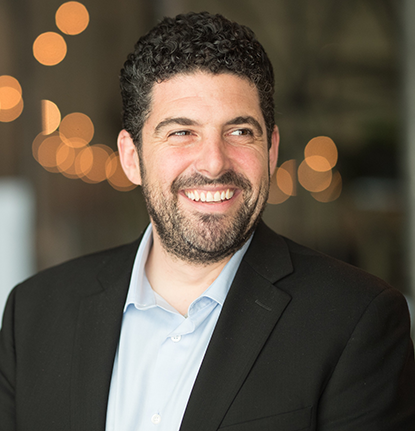
Seth Adler heads up All Things Insights & All Things Innovation. He has spent his career bringing people together around content. He has a dynamic background producing events, podcasts, video, and the written word.
View all posts

